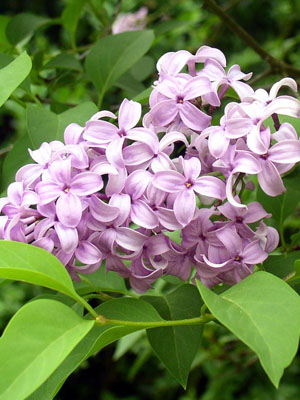Crop Rotation Group
Miscellaneous
|

|
Soil
Fertile, well-drained soil,
|
Position
Full sun.
|
Frost tolerant
Yes, lilacs are winter hardy woody shrubs, tolerating cold to -30°F (-34°C).
|
Feeding
None generally needed.
|
Companions
-
|
Spacing
Single Plants: 5' 10" (1.80m) each way (minimum)
Rows: 5' 10" (1.80m) with 5' 10" (1.80m) row gap (minimum)
|
Sow and Plant
Lilacs have been intensively hybridized for hundreds of years, so it is best to start with a purchased plant of a proven cultivar. Container-grown lilacs can be transplanted from late winter to early summer. Amend the planting hole with organic matter to enhance drainage, and water thoroughly as you set plants slightly high in their planting holes. Lilacs need regular water for the first year or two after planting. Once they are established, water lilacs only during droughts. Check plant tags for the plant’s mature height and width, and adjust spacing accordingly. Young plants can be held in containers for a year or two if they are attentively watered. Use the largest containers you can manage, because even dwarf lilacs grow into large bushes.
Our Garden Planning Tool can produce a personalized calendar of when to sow, plant and harvest for your area.
|
Notes
A garden classic in climates with cold winters, lilacs require consistent winter chilling for best bloom. The fragrant flower clusters in shades of lavender to white appear all at once in late spring. Most lilacs grow into large, upright shrubs, but compact varieties are available for use in hedges or mixed plantings. Good air circulation is important for lilacs, along with attentive annual pruning. In early summer, as soon as the plants stop blooming, prune out crowded or damaged branches, tip back leggy stems, and remove the oldest suckers that grow from the plant’s base.
|
Harvesting
Lilac blossoms are edible and make lovely additions to syrups or salads. Blossom clusters make fragrant yet short-lived cut flowers. Lilacs can be propagated by rooting stem cuttings taken in early summer, after the plants finish blooming.
|
Troubleshooting
Powdery mildew often infects lilacs in late summer, but it does not kill the plants. Lilacs are rarely browsed by deer.
|